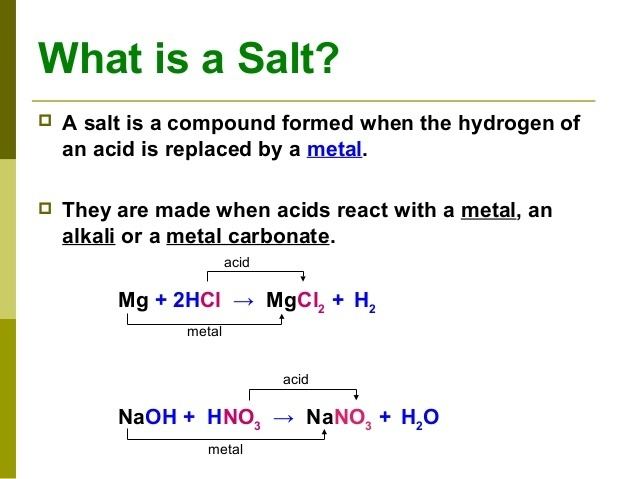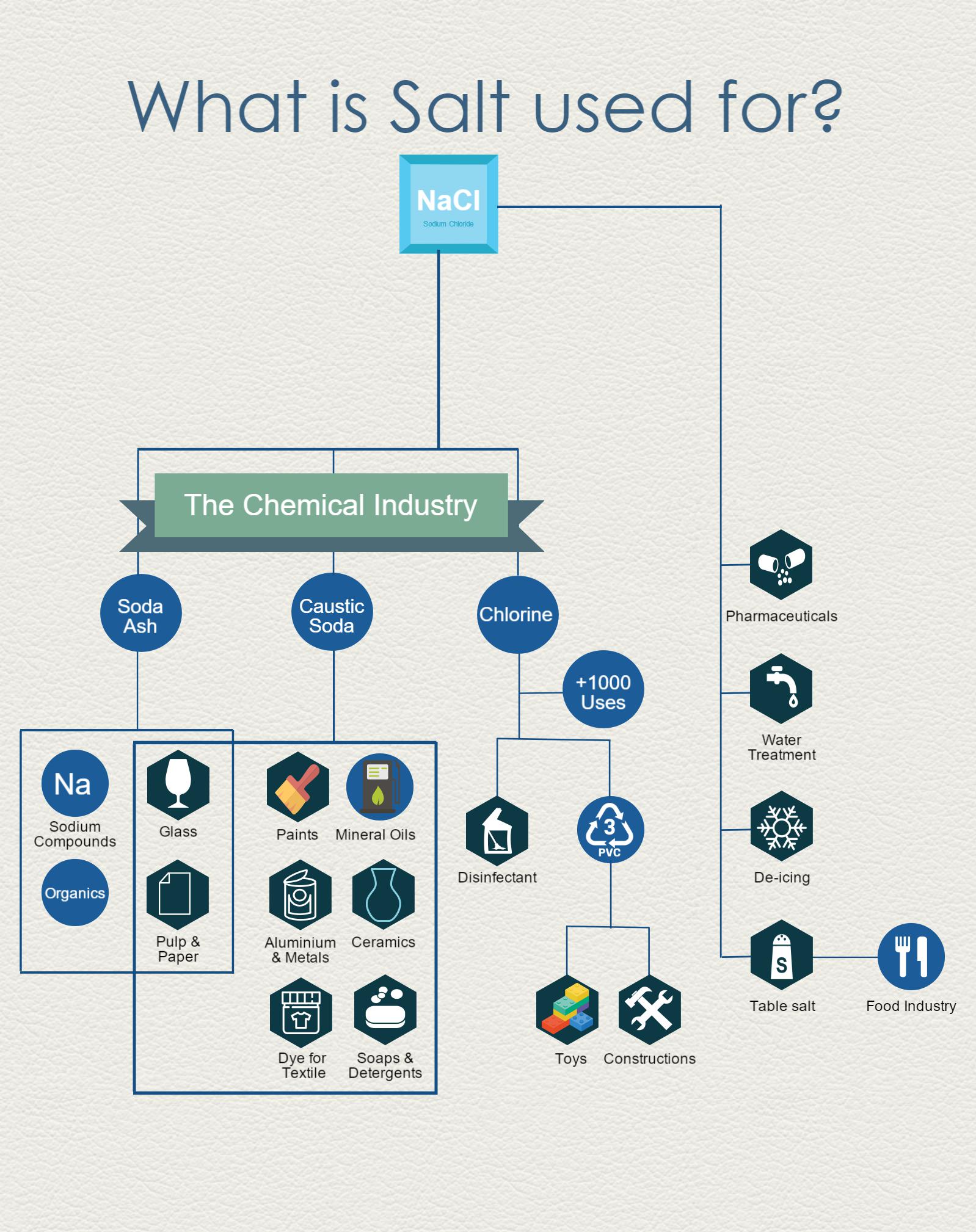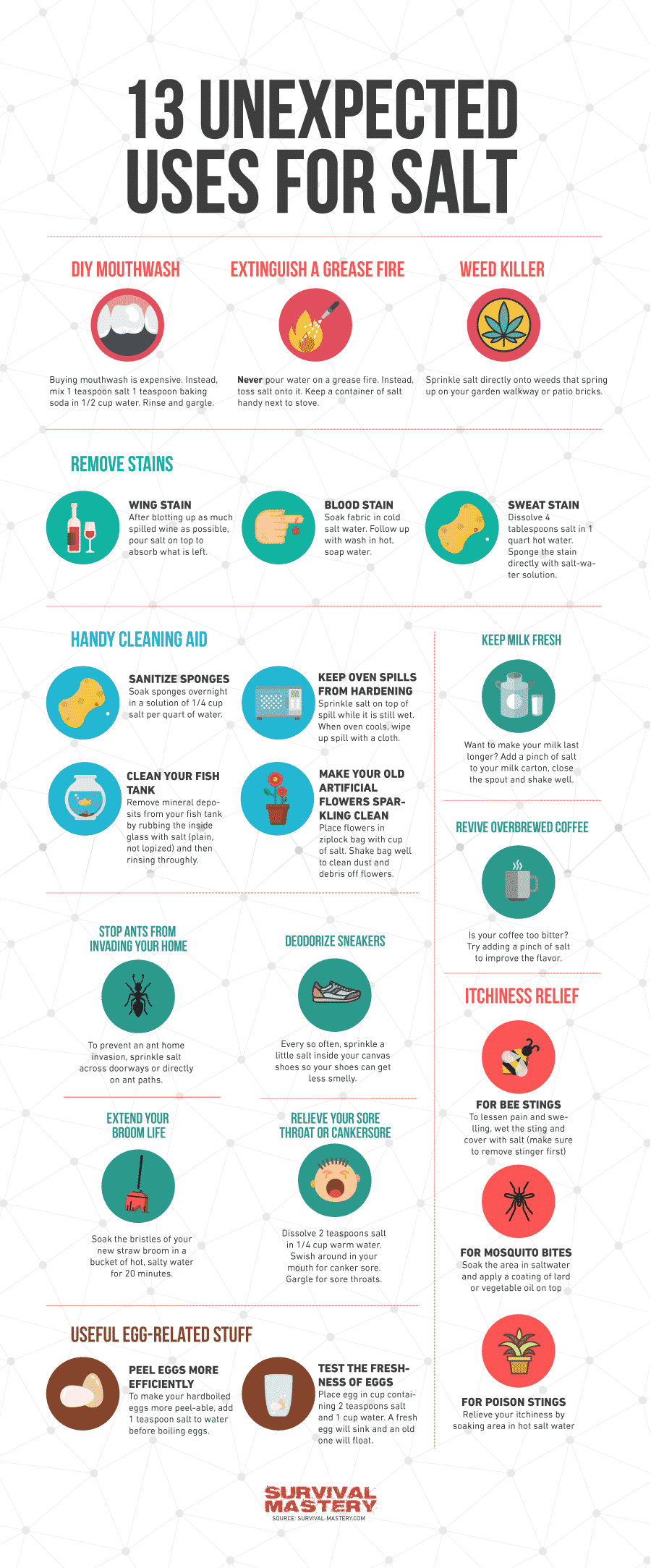research
Salt is a mineral composed primarily of sodium chloride (NaCl), a chemical compound belonging to the larger class of salts; salt in its natural form as a crystalline mineral is known as rock salt or halite. Salt is present in vast quantities in seawater, where it is the main mineral constituent. The open ocean has about 35 grams (1.2 oz) of solids per liter of sea water, a salinity of 3.5%.
Salt is essential for life in general, and saltiness is one of the basic human tastes. Salt is one of the oldest and most ubiquitous food seasonings, and salting is an important method of food preservation.
back<
In chemistry, a salt is an ionic compound which is made up of two groups of oppositely charged ions. The ion with a positive charge is called a cation, and the one with a negative charge is called an anion. How many of each type of ion the salt has is important because the compound must have an overall electrical charge of zero - that is, an equal balance between positive charge and negative charge.
Salts often form a crystal structure or crystal lattice, a highly ordered formation of molecules. This is why we get crystals of salt on our fries.
Crystals of salt
photograph of salt crystals
This ordered structure and strong ionic bonding leads many salts to have some special properties. First, they tend to be crystalline solids with crystal structures. The solids also tend to be hard and brittle due to strong ionic bonding throughout the crystal. Salts also have high boiling and melting points because it takes a lot of energy to break those bonds and change the salt's matter state. Finally, salts are electrolytes, meaning they dissolve in water to create free moving ions, which are able to conduct electricity.




In general, “brine” is any solution with an extremely high concentration of salts such as sodium chloride, which can occur either naturally (as with seawater, deep-water ocean pools, salt lakes, etc.) or as a byproduct of industry. These byproducts, or “brine waste” streams, are typically highly concentrated salt solutions that, in some cases, contain more than twice the amount of concentrated salts than natural brine solutions. Brine waste can also carry various contaminants, which differ depending on which process the brine waste is a byproduct of.
Brine waste streams can be some of the most challenging to treat or discharge because their composition and purification requirements can be rather dynamic and complex.
Some examples of brine waste created as a byproduct of industry include:
cooling tower and boiler effluent
reverse osmosis (RO) and ion exchange waste/reject streams
produced water from extracting oil and natural gas
chlor-alkali and chemical plant waste
acid rock and mine drainage
food preservation and manufacturing waste streams
desalination waste from potable water creation
irrigation runoff
Uses of salt in various industries ranging from food( 7% of salt produced is for food industry for people to consume), industrial purposes, dyeing to paper and pulp industry.
Strangely, despite the fact it’s something everyone regularly eats, salt is historically one of the most sacred objects around. It is mentioned multiple times not only in the bible but in the religious texts of cultures across the world. Old myths center around the idea that witches couldn’t use salt in their kitchens, that the devil was prevented from touching it and that simply asking for salt at the dinner table could banish him from your home. Even in DaVinci’s painting of the last supper we see someone spilling salt on the table, and who is it?
link